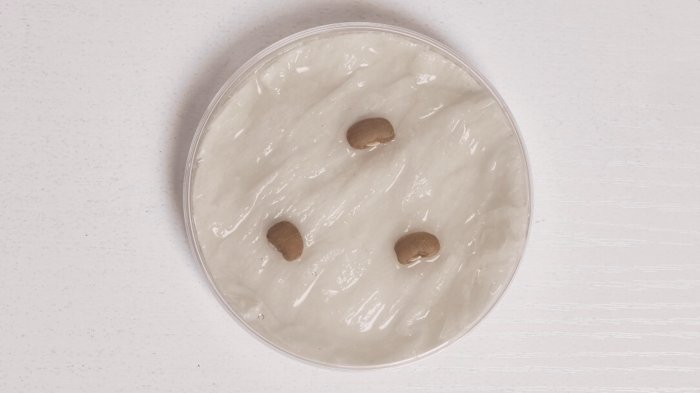Imbibition
When seeds have ready access to water, they take it up relatively rapidly, in a process called imbibition. This is a different process to that shown in the isotherm, but it usually begins in region II. Imbibition is an essential prerequisite for germination, since it allows the seed to take in sufficient water for the chemical changes that are going to occur. When it reaches region III of the isotherm, the radical emerges (embryonic root), and the seedling starts to grow, while the moisture content of the seed continues to increase.
Watch the timelapse video, which shows imbibition in three cowpea seeds. Notice how the size of the three cowpeas increases visibly as water rushes in.

Transcript: Video 3: imbibition in cowpea seeds
This video shows a demonstration of water uptake (or imbibition) in cowpea seeds.
The footage was filmed over twenty-four hours, and sped up using time-lapse technique. You can see the seeds visibly swelling, as the water enters.
There is no narration or commentary over this footage.
So far, we have looked at patterns typical of orthodox seeds. Orthodox seeds tolerate drying to low moisture and their longevity increases as moisture content is reduced over region II. However, not all seeds are this accommodating. Recalcitrant seeds die if they are dried below region III.
Gearing up for germination
